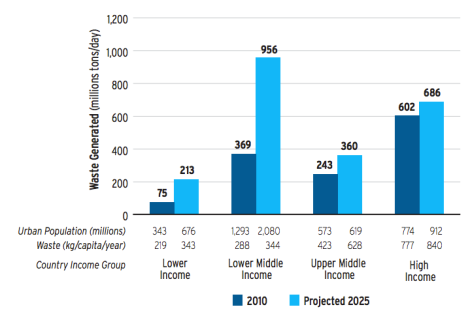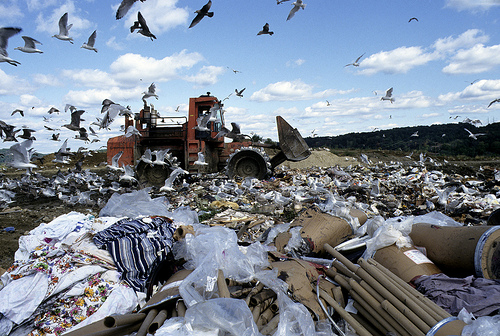 At least, if you’re a man living in America.
At least, if you’re a man living in America.
[T]he average American man, weighing 175 pounds, produces his weight in trash every three months.
This quote comes from The Atlantic‘s Derek Thompson, who wrote a simple and solid overview of a report released this week by the World Bank. The report, “What a Waste: A Global Review of Solid Waste Management,” is a thorough assessment of the world’s current and future garbage production.
Garbage is one of those things that’s part of our invisible infrastructure for the most part. We put our garbage outside, it goes away. This is not the case everywhere else in the world.
Thompson starts with this graph:

“OECD” is members of the Organization for Economic Cooperation and Development; in essence, the western world. We create 44 percent of the world’s garbage. Which no doubt doesn’t surprise you. After all, an American man creates four versions of himself in garbage annually. (This should be a new measure, like dog years: How many garbage people old are you?) Looking at income levels instead of nationalities, the difference is larger, with high income countries creating 46 percent of the world’s waste.
Then there’s this chart:

That garbage collection, the magical process by which our garbage evaporates into the systems of our cities, is abnormal. In South Asian cities, the rate of collection is 65 percent. In Africa (AFR), it’s under 50 percent. (This is only municipal waste collection, mind you.)
In Rio de Janeiro, Brazil (included in LAC above), the Jardim Gramacho became part of the local economy, if not always the visible landscape. As the World Bank report notes, both disposal rates and disposal sites are correlated to economic status — the former negatively, the latter positively. Jardim Gramacho recently closed, a process documented in the fantastic film Waste Land.
Last bit of data worth pulling out of the report is this one.
As income levels drop, the amount of organic material in waste increases. Which means an increase in the amount of methane produced as the organic matter breaks down. Methane is a potent greenhouse gas. By 2025, the primary producer of waste will be lower-middle income countries, nations that produce far more organic waste.

Granted, we’re projecting existing waste composition into the future, which is not a fair thing to do. But however you look at it, the world’s waste problem is getting worse, not better. Hopefully, we’ll have this thing fixed by the time 2025 rolls around, though that’s a lot to do in 15 years.
I’m sorry. It’s a lot to do in 60 garbage people.



